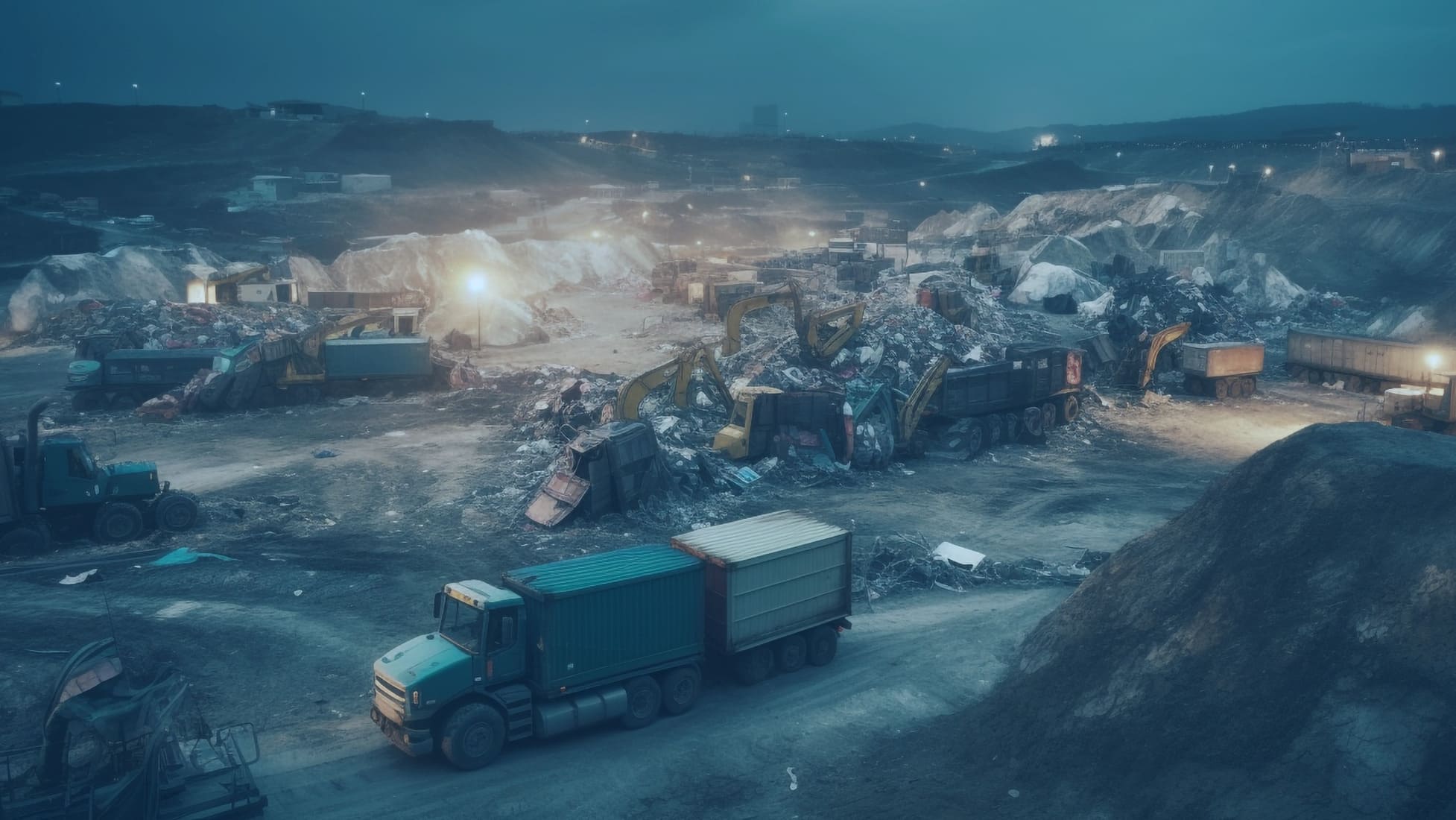Effective garbage management is a critical aspect of urban living, and local governments play a pivotal role in ensuring that waste is collected, disposed of, and recycled efficiently. In today’s fast-paced world, the demand for streamlined garbage management services has never been higher. To meet this demand and enhance overall sustainability, local governments can adopt advanced waste collection software and implement innovative strategies. In this comprehensive guide, we will explore how local governments can improve their garbage management system, focusing on the latest trends in waste management, the benefits of advanced software solutions, and practical steps to create a blueprint for success.
Understanding the Trends in Garbage Management System
Before delving into the specifics of improving garbage management system, it’s essential to stay updated with the latest trends in the field. Keeping pace with these trends will help local governments make informed decisions and adapt to changing circumstances. Here are some key trends shaping the garbage management landscape:
- Waste Reduction and Recycling Initiatives: There is a growing emphasis on waste reduction and recycling to minimize the environmental impact of garbage disposal. Local governments are increasingly promoting recycling programs, encouraging citizens to reduce waste and sort materials for recycling.
- Smart Waste Collection: The integration of technology in waste collection, also known as smart waste management, is on the rise. This includes the use of sensors, GPS tracking, and advanced software solutions to optimize garbage collection routes and schedules.
- Circular Economy: The concept of a circular economy focuses on reducing waste by reusing, repairing, and recycling products. Local governments are exploring ways to support this concept by incentivizing circular economy practices among businesses and consumers.
- Community Engagement: Garbage management is no longer just a government responsibility. Local governments are actively involving citizens and communities in waste management programs, promoting awareness, and encouraging responsible disposal practices.
- Waste-to-Energy Solutions: With an eye on sustainability, some regions are investing in waste-to-energy technologies to convert garbage into usable energy, reducing landfill waste and generating power simultaneously.
The Role of Advanced Waste Collection Software
To effectively address these trends and streamline garbage management system, local governments can benefit immensely from the adoption of advanced waste collection software.
-
Route Optimization:
- Advanced waste collection software employs cutting-edge algorithms and real-time data to optimize garbage collection routes. It takes into account factors like traffic conditions, bin capacities, and collection frequencies.
- Route optimization reduces the time and resources required for collection, minimizing fuel consumption, vehicle wear and tear, and overall operational costs.
- With optimized routes, collection trucks can cover more ground efficiently, ensuring that no areas are missed and preventing overflowing bins.
-
Resource Allocation:
- Local governments can better allocate resources with the help of software. They can track the performance of collection vehicles, manage staff schedules, and schedule equipment maintenance effectively.
- Software can provide insights into which areas generate more waste and require additional resources, enabling local governments to distribute their resources based on demand.
- By reducing downtime and improving resource allocation, local governments can enhance service quality while keeping costs in check.
-
Data Analytics:
- Modern garbage management software is equipped with robust data analytics capabilities. It collects and processes data from various sources, including GPS trackers, sensors, and citizen reports.
- Data analytics allows local governments to identify trends in waste generation, which can inform decisions about bin placement, collection frequencies, and recycling initiatives.
- Predictive analytics can forecast future waste generation patterns, enabling better planning and allocation of resources.
-
Citizen Engagement:
- Some advanced software solutions offer user-friendly mobile apps or online platforms for citizens to interact with local authorities.
- Citizens can report issues such as missed collections, damaged bins, or illegal dumping through these platforms, which ensures a prompt response from waste management teams.
- Real-time updates on collection schedules, recycling events, and educational materials can be easily disseminated to the community, promoting responsible waste disposal.
-
Environmental Impact Assessment:
- Waste collection software can track and report on key environmental metrics, such as emissions reductions, landfill diversion rates, and energy savings.
- Local governments can use this data to demonstrate their commitment to sustainability and meet environmental goals.
- Accurate reporting on environmental impact can also be leveraged to attract funding or grants for eco-friendly initiatives.
-
Operational Efficiency:
- Advanced software streamlines administrative tasks related to garbage management. It automates billing, invoicing, and reporting processes, reducing paperwork and minimizing errors.
- Route optimization and resource allocation result in reduced fuel consumption, lowering the carbon footprint of waste collection operations.
- The efficiency gains from software implementation translate into cost savings that can be reinvested into further improving waste management services.
-
Compliance and Regulation:
- Waste collection software can help local governments stay compliant with environmental regulations and reporting requirements. It provides accurate records of waste collection activities, making it easier to demonstrate adherence to legal standards.
- In case of audits or regulatory inspections, having detailed digital records ensures a smooth and transparent process.
Steps to Create a Blueprint for Success
Now that we understand the significance of staying updated with garbage management trends and the benefits of advanced waste collection software, let’s outline the steps local governments can take to create a blueprint for success:
- Assessment and Planning:
- Evaluate the current state of garbage management system, including collection routes, equipment, and workforce.
- Identify areas that require improvement and set clear goals for service enhancement.
- Develop a comprehensive plan that aligns with the latest trends and incorporates advanced software solutions.
- Invest in Advanced Software:
- Research and invest in reputable waste collection software that suits the specific needs of your locality.
- Train staff on how to use the software effectively, ensuring a smooth transition.
- Promote Recycling and Waste Reduction:
- Launch awareness campaigns to educate citizens about the importance of recycling and waste reduction.
- Provide convenient recycling options and incentives to encourage participation.
- Implement Smart Waste Collection:
- Integrate GPS-enabled tracking and sensors on collection vehicles to optimize routes and improve efficiency.
- Use real-time data from the software to adjust collection schedules based on demand.
- Community Engagement:
- Establish platforms for citizen engagement, such as mobile apps or websites, to report issues, request services, and stay informed.
- Organize community events and workshops to foster a sense of responsibility for waste disposal.
- Monitor and Evaluate:
- Continuously monitor the performance of waste management services using data analytics from the software.
- Regularly review goals and adjust strategies as needed to adapt to changing trends and demands.
- Environmental Impact Assessment:
- Measure and report on the environmental impact of improved garbage management services, emphasizing reductions in emissions and landfill diversion rates.
- Adapt to Future Trends:
- Stay informed about emerging trends in waste management and be prepared to adapt and innovate as new technologies and practices evolve.
Conclusion
Local governments have a significant role to play in improving garbage management services and contributing to a more sustainable future. By embracing the latest trends in waste management, investing in advanced waste collection software, and actively engaging with the community, municipalities can create a blueprint for success. This blueprint not only enhances the efficiency of garbage collection and disposal but also promotes responsible waste practices among citizens. As we move toward a more environmentally conscious era, local governments must lead the way in ensuring that garbage management system are efficient, eco-friendly, and responsive to the needs of their communities.



